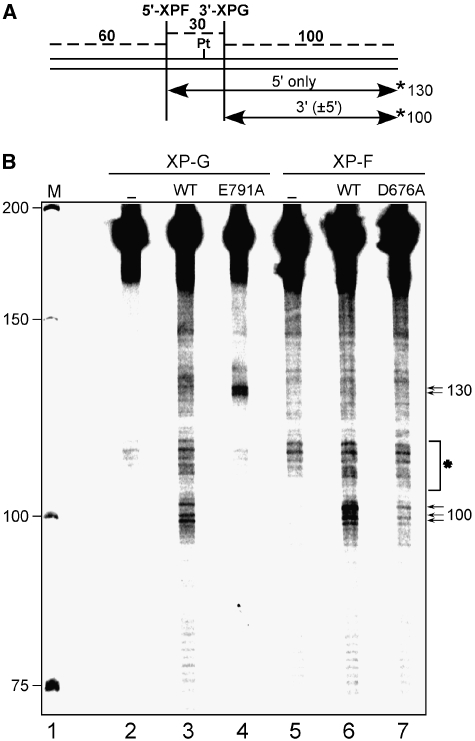Figure 2.
Efficient XPG cleavage is dependent on the catalytic activity of XPF. (A) Schematic representation of a 190-bp BssHII fragment with a single defined cisplatin lesion. Incision sites by ERCC1-XPF and XPG are indicated. Incisions were detected using fill-in reactions with Sequenase 2.0 and [α-32P] dCTP by annealing an oligonucleotide complementary to a BssHII cleavage site containing a G4 overhang allowing for the visualization of the 130 and 100 mer products for 5′ and 3′ incision, respectively. Possible excision products are indicated by arrows and the position of the [α-32P] label is indicated with an asterisk. (B) cccDNA with a single defined cisplatin lesion was incubated with cell extracts lacking XPG- (XPCS1RO, lanes 2–4) or XPF-deficient (XP2YO, lanes 5–7), either alone (lanes 2 and 5) or complemented with wild-type XPG (lane 3), XPG E791A (lane 4), wild-type XPF (lane 6), XPF D676A (lane 7), purified, digested with BssHII, radioactively labelled and analysed on a denaturing PAGE gel. The positions of size markers are indicated on the left, and the position of the reaction products on the right of the gel. Unspecific bands present in all the lanes are marked with an asterisk.

